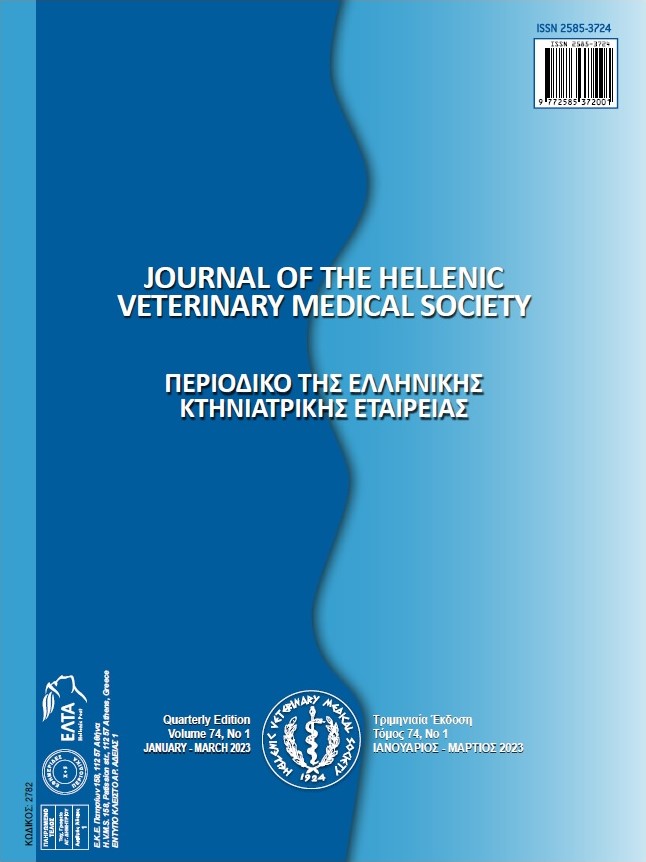Could homocysteine represent a negative acute phase reactant in canine infections-a pilot study?

Abstract
Homocysteine (Hcy) was investigated as the biomarker of cardiac, renal, and gastrointestinal disorders in dogs. Data about low Hcy concentrations in the systemic inflammatory response syndrome raised a hypothesis that Hcy in dogs is a negative acute-phase reactant. This survey compared Hcy concentrations, serum amyloid A (SAA), and the routine laboratory parameters between healthy (HD, N=6) and dogs with inflammation of different extent: mild ( dirofilariosis (DIR), N=31), moderate (babesiosis (BAB), N=12), and severe (pyometra (PYO), N=8). The BAB and PYO groups had lower Hcy er than HD. Also, the levels in the PYO group were below those in the DIRO group. SAA had the inverse pattern. Across the groups, Hcy and SAA levels correlated negatively (ρ = -0.502, P<0.001). Hcy and SAA correlated with the erythrocyte count, hematocrit, hemoglobin and mean cellular hemoglobin concentrations, and neutrophil count, with correlations being positive for Hcy and negative for SAA. Among all dogs, hemoglobin was the only independent predictor of Hcy concentration. Hcy levels in canine infections, decreased as acute-phase reaction (APR) intensified. Also, they were related with the hematology changes accompanying the APR. Further studies will establish the clinical potential of these alterations.
Article Details
- How to Cite
-
Ilic Bozovic, A., Đoković, P., Milanović, Z., Janjić, F., Spariosu, K., Radonjić, V., Radaković, M., Magaš, V., Filipović, D., Stanković, S., Kovačević Filipović, M., & Beletić, A. (2023). Could homocysteine represent a negative acute phase reactant in canine infections-a pilot study?. Journal of the Hellenic Veterinary Medical Society, 74(1), 5463–5470. https://doi.org/10.12681/jhvms.29529
- Issue
- Vol. 74 No. 1 (2023)
- Section
- Research Articles

This work is licensed under a Creative Commons Attribution-NonCommercial 4.0 International License.
Authors who publish with this journal agree to the following terms:
· Authors retain copyright and grant the journal right of first publication with the work simultaneously licensed under a Creative Commons Attribution Non-Commercial License that allows others to share the work with an acknowledgement of the work's authorship and initial publication in this journal.
· Authors are able to enter into separate, additional contractual arrangements for the non-exclusive distribution of the journal's published version of the work (e.g. post it to an institutional repository or publish it in a book), with an acknowledgement of its initial publication in this journal.
· Authors are permitted and encouraged to post their work online (preferably in institutional repositories or on their website) prior to and during the submission process, as it can lead to productive exchanges, as well as earlier and greater citation of published work.



